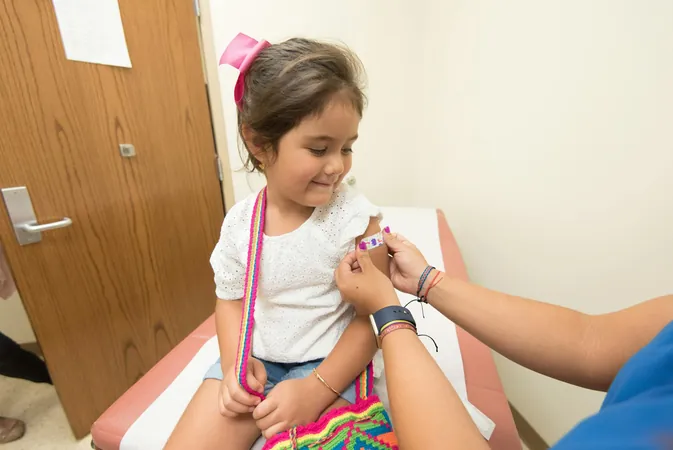
CDC Sounds Alarm: Essential Strategies for Tracking H5N1 Exposure
2025-07-11
Author: Arjun
CDC Issues Urgent Recommendations Amid Rising H5N1 Threat
On July 8, 2025, the Centers for Disease Control and Prevention (CDC) unveiled crucial new guidelines urging health departments at all levels to ramp up surveillance efforts targeting individuals potentially exposed to the deadly H5N1 avian influenza virus. This heightened alert comes as cases of H5N1 are reported in birds, cattle, and sporadically in humans, igniting fears that the virus could jump species.
Stay Vigilant: New Monitoring Guidelines
The CDC emphasizes that anyone who comes into contact with H5N1-infected animals, even while equipped with personal protective equipment (PPE), must be closely monitored for any symptoms. This observation should extend for 10 days after the last potential exposure.
Recognizing the Symptoms That Matter
Key symptoms to watch for include common signs of respiratory infections, such as coughing, sore throat, and shortness of breath. Additionally, any signs of conjunctivitis—like red or watering eyes—and gastrointestinal issues, including diarrhea, should be taken seriously. Severe complications from H5N1 infections can lead to pneumonia, acute respiratory distress syndrome, sepsis, and even death.
Rapid Response Required for Suspected Cases
Health officials are urged to take immediate action if they suspect a human infection and must inform the CDC within 24 hours of any case under investigation. Testing is crucial for those who meet specific criteria, including close contact with infected animals or handling contaminated animal products.
Critical Testing Procedures Explained
Testing should utilize RT-PCR assays tailored specifically for H5N1, conducted by local health laboratories. While asymptomatic testing is generally discouraged, exceptions exist for workers who experienced PPE failures or who are close contacts of confirmed cases. In these high-risk instances, nasal and oropharyngeal swabs are recommended to help track the virus.
A Unified Front Against Zoonotic Threats
The CDC underscores the necessity of a collaborative ‘One Health’ approach, integrating efforts across health departments, veterinarians, agriculture officials, and wildlife agencies. This strategy is essential to understanding the links between human, animal, and environmental health, which is critical in tackling zoonotic threats like H5N1.
Stay Informed and Prepared!
As the presence of H5N1 remains a concern across various animal populations, the CDC's guidance serves as a vital reminder of the importance of stringent monitoring, quick investigative responses, and teamwork in public health to minimize the chances for this virus to adapt and spread among humans. Vigilance is key!



 Brasil (PT)
Brasil (PT)
 Canada (EN)
Canada (EN)
 Chile (ES)
Chile (ES)
 Česko (CS)
Česko (CS)
 대한민국 (KO)
대한민국 (KO)
 España (ES)
España (ES)
 France (FR)
France (FR)
 Hong Kong (EN)
Hong Kong (EN)
 Italia (IT)
Italia (IT)
 日本 (JA)
日本 (JA)
 Magyarország (HU)
Magyarország (HU)
 Norge (NO)
Norge (NO)
 Polska (PL)
Polska (PL)
 Schweiz (DE)
Schweiz (DE)
 Singapore (EN)
Singapore (EN)
 Sverige (SV)
Sverige (SV)
 Suomi (FI)
Suomi (FI)
 Türkiye (TR)
Türkiye (TR)
 الإمارات العربية المتحدة (AR)
الإمارات العربية المتحدة (AR)